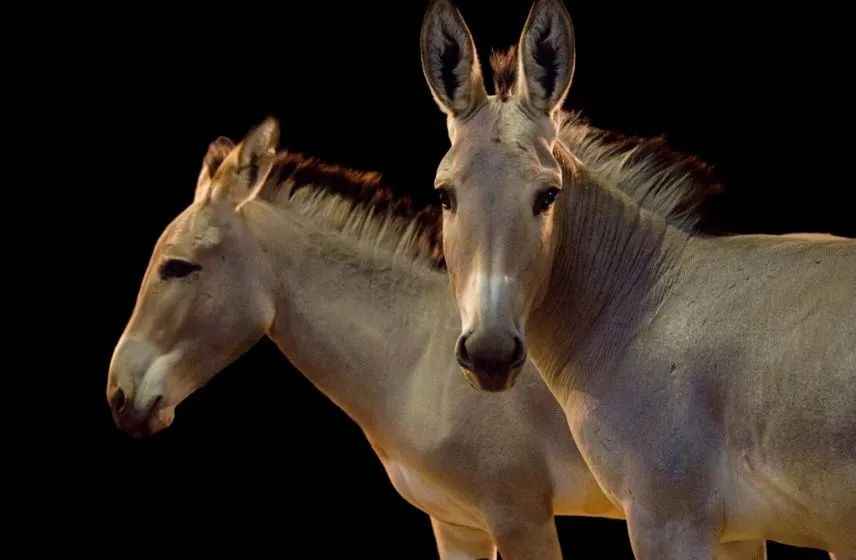In the arid semi-deserts of the Horn of Africa lives an elegant and resilient creature—the Somali wild ass (Equus africanus somaliensis). As one of the wild ancestors of modern domestic donkeys, they once thrived in the dry grasslands and hills of Ethiopia, Eritrea, and Somalia. However, a combination of climate change, habitat loss, and human activities is pushing this species to the brink of extinction.
The Horn of Africa has experienced a marked increase in drought frequency and intensity over the past two decades, directly degrading the Somali wild ass’s habitat. Shrinking grasslands force them to compete with livestock for limited water and forage, exacerbating malnutrition and disease risks. For instance, the 2021 drought in northeastern Kenya killed at least 200 Somali giraffes, a fate mirrored in wild ass populations.
Warfare and communal conflicts further escalate threats. Illegal hunting persists due to weapon proliferation in parts of Somalia and Ethiopia, where their meat and body parts are sought for food and traditional medicine. Herders also kill them to protect livestock, while genetic purity is compromised by hybridization with domestic donkeys.
As a keystone species in arid ecosystems, Somali wild asses dig "ass wells" to access groundwater, inadvertently providing water sources for other animals and enhancing biodiversity. This behavior is critical amid desert expansion caused by climate change, even fostering plant seedling growth.
International efforts to save them include captive breeding and habitat protection. The UK’s Marwell Zoo recently celebrated a successful birth, offering hope for population survival. In Africa, Kenya’s Hirola Conservation Programme employs community collaboration, establishing reserves, providing emergency water, and combating diseases to balance wild ass and human needs. However, the IUCN Red List estimates fewer than 1,000 remain in the wild, with some sources suggesting less than 200, underscoring the urgency.
Protecting Somali wild asses requires transboundary cooperation and long-term investment. Experts advocate expanding protected areas, strengthening anti-poaching patrols, and integrating communities into conservation education. For example, community-led monitoring programs in northern Ethiopia have shown initial success. Genetic studies also highlight their unique divergence from domestic donkeys, underscoring their irreplaceable value for biodiversity research

